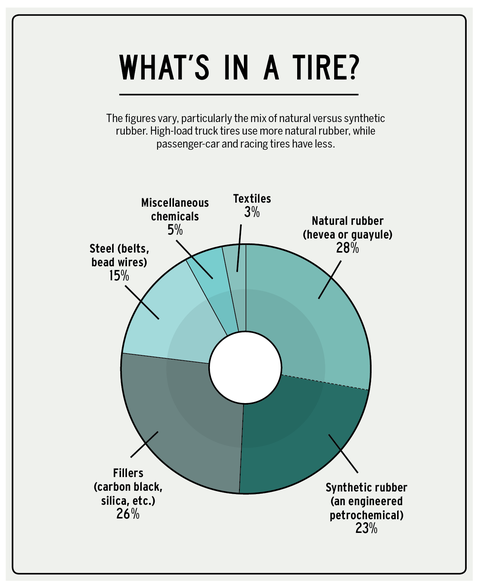
From the October 2022 problem of Car and Driver.
Requirement is the mom of invention, although in the situation of guayule (pronounced wy-OO-lee) rubber, it truly is considerably less a new idea than it is a reconciliation with the loved ones. The Aztecs knew this scrubby desert plant was a supply of pure latex, but because the discovery of vulcanization in 1839, rubber manufacturing has been largely centered all around the far more tropical rubber tree (hevea).
Weather adjust, provide-chain considerations, and political instability in places where hevea grows have pushed makers to seem for alternate resources. That introduced Bridgestone to guayule, which is indigenous to southern pieces of Arizona and New Mexico, West Texas, and bordering Mexican states.
The tire organization has been exploring and studying guayule generation on a business scale. Now Bridgestone options to commit a different $42 million towards operations to increase the plan.
Guayule developed in North America faces no trans-oceanic supply-chain concerns, is much less labor-intense than hevea to improve and harvest, and provides farmers a very low-h2o-use and in a natural way pest-resistant regional crop. That tends to make it a compelling option as drinking water allocations get slashed in the confront of weather modify, aridification, and a extended megadrought cycle, which has dropped lake degrees along the Colorado River to historic lows. And because guayule grows in parts way too hot and dry for most farming, it doesn’t displace food crops. Bridgestone aims to offer tires with guayule rubber by 2030 and has presently started tire screening in that most venerable of laboratories, IndyCar racing.
The Guayule Course of action
- Plant from seed.
- Water sparingly and regulate weeds (if any—with very low watering, they’re unlikely) for two a long time as crops mature.
- Slice flush to the ground. Bale into 750- to 800- pound cubes.
- Repeat ways 2 and 3 two times a lot more about four years. Then until underneath buried roots and rotate to a different crop.
- Grind bales at a biorefinery in a 90-minute shut-loop process.
- This yields a few commercially feasible merchandise: hypoallergenic all-natural rubber, resin (utilized in coatings, inks, and adhesives), and bagasse (employed for biofuels and bio-centered chemical substances).
This articles is imported from OpenWeb. You could be ready to discover the exact same written content in a further structure, or you could be able to discover extra info, at their world-wide-web web site.



 5 Common Car Problems You Should Be Prepared for
5 Common Car Problems You Should Be Prepared for  What Makes Dunlop Tyres The Best Choice For Drivers In Dubai?
What Makes Dunlop Tyres The Best Choice For Drivers In Dubai?  The Different Types Of Cooper Tyres Available In Dubai
The Different Types Of Cooper Tyres Available In Dubai  The Latest Continental Tyre Technologies In Dubai
The Latest Continental Tyre Technologies In Dubai  TOM’S Angel T01: As Rare & Real As It Gets
TOM’S Angel T01: As Rare & Real As It Gets  Smart budgeting strategies for tradespeople
Smart budgeting strategies for tradespeople  Exploring New Car Ratings: A Comprehensive Insight into Automotive Excellence
Exploring New Car Ratings: A Comprehensive Insight into Automotive Excellence  Vintage Ring Settings Loved by London Couples
Vintage Ring Settings Loved by London Couples